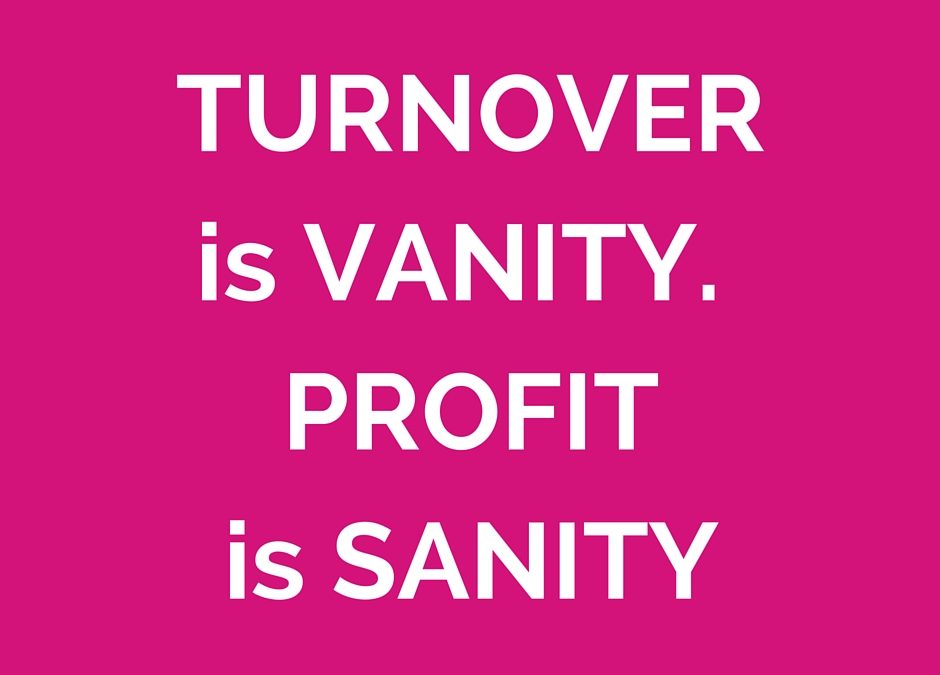I have been catching up with the latest episodes of Dragon’s Den. Whilst I appreciate the show is heavily edited, I am still amazed at the number of people who enter the Den without a clear understanding of their figures.
So many have no idea of the difference between turnover and profit. The episode I have just finished showed a woman who was so proud of her £20,000 turnover but could not understand why the dragons were aghast when she said she had a negative figure for her gross profit. She was questioned about her understanding of what gross profit was and she obviously did not have a clue.
Therefore, let’s clear up the key meaning of turnover, gross profit and net profit in case you are unsure. And if after reading this you still don’t understand, please don’t bury your head and feel scared to ask for fear of looking stupid. These figures are imperative to your business success so seek advice and explanation from your accountant.
Turnover: This is simply the total amount of your sales income over a specified amount of time. VAT is excluded from this figure if your business is VAT registered.
Turnover = income received from sales
Gross profit: This is the money that is left from your turnover once you have deducted the direct cost of making your product or providing your service (such as raw materials) but not the general indirect running costs of the business (such as insurance, salaries etc).
Gross profit = turnover – direct costs
Net profit: This is the money that is left once you deduct the indirect running costs of your business such as marketing, insurance, salaries etc from your gross profit.
Net profit = gross profit – indirect running costs
A simplified example:
Mary makes luxury cushions. She sells her cushions at £50 each. To make each cushion she needs to buy £7 worth of material, cotton, stuffing etc. The running costs of her business for insurance, telephone, personal drawing, marketing etc are £1500 per month.
Over the last 12 months Mary sold 500 cushions.
Her turnover was £25,000 (500 x £50)
The direct cost of marking the cushions was £3,500 (500 x £7)
Her gross profit was £21,500 (£25,000 minus £3,500)
Her indirect costs were £18,000 (12 months x £1500)
Her net profit was £3,500 (£19,000 minus £18,000)
That’s it in a nutshell. If you need any more help, pop on over to The Small Business Kit and drop me a line.





